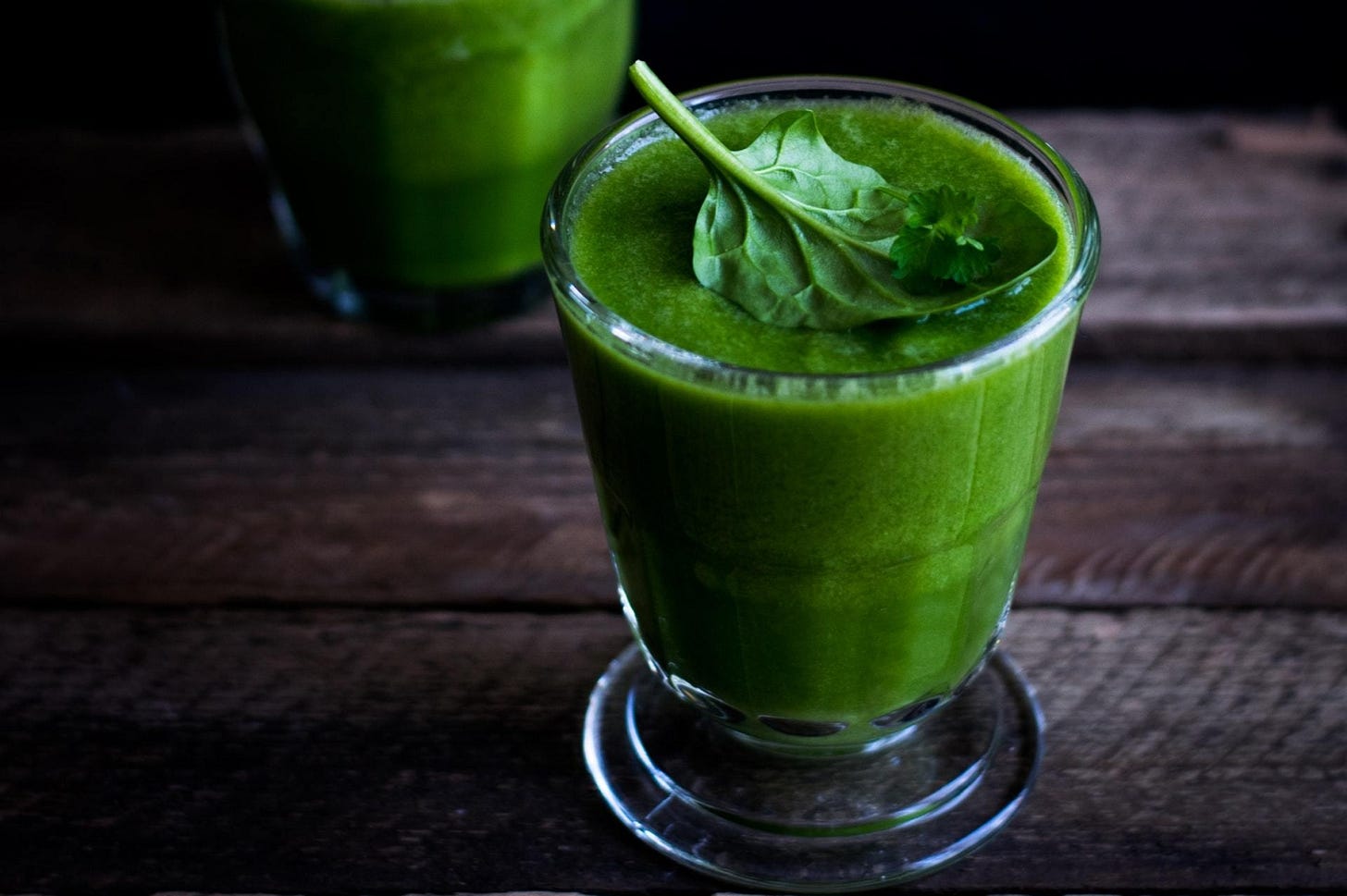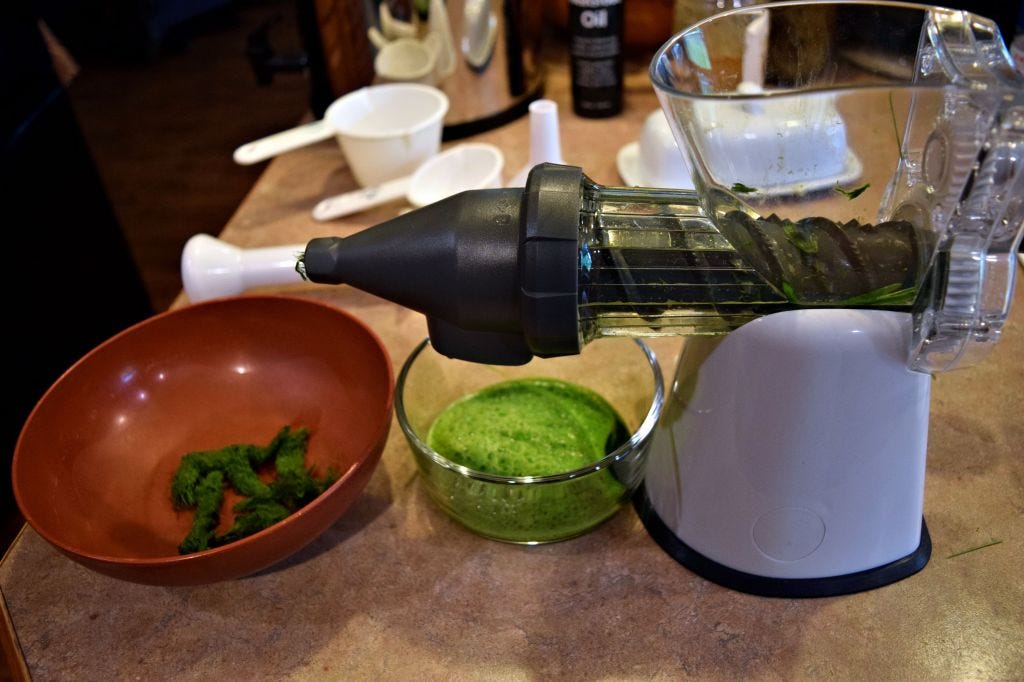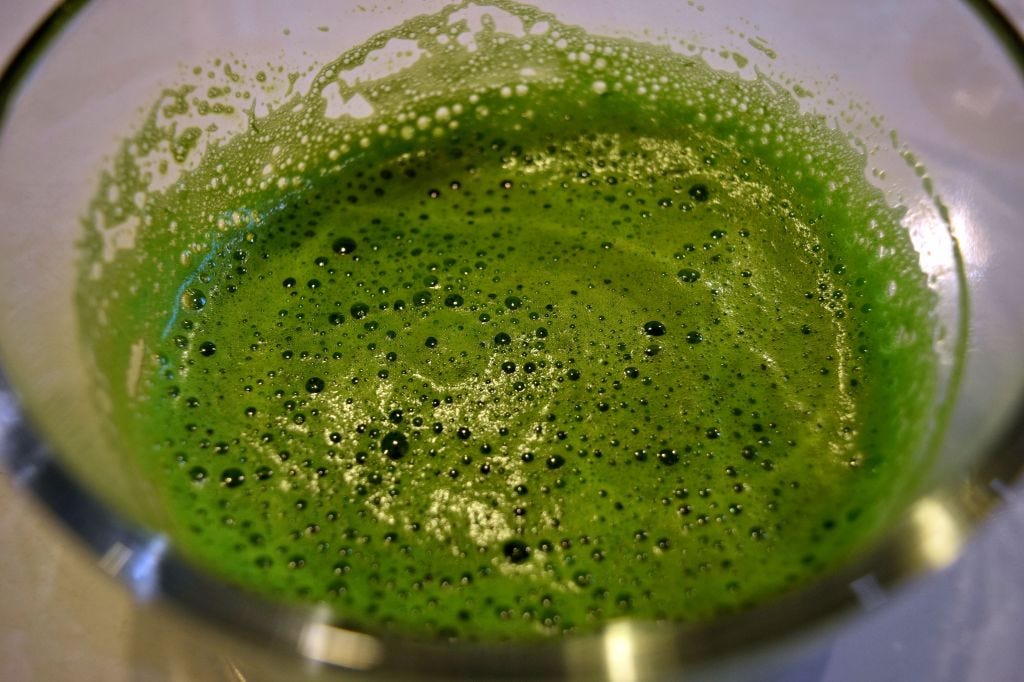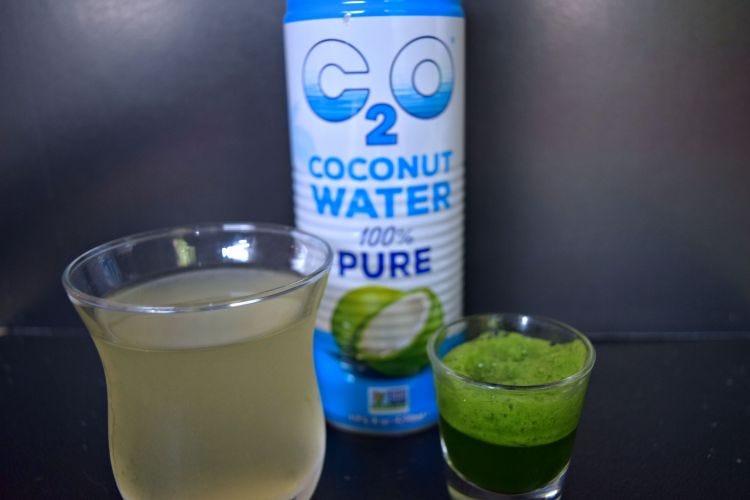Wheatgrass and other green leafy vegetables make a healthy green juice that will kick start your nutrition. We started doing green juicing after watching the movie, “Fat, Sick and Nearly Dead” in 2014. I believe this was a pivotal point in my healing journey.
What’s the difference between a green juice and a smoothie? I’ve often heard the two confused or used interchangeably. Green juices are freshly pressed through a juicing system that uses a masticating auger to “cold press” the juice from the plant. This method extracts and separates the fiber from the juice (see the photo below.) The juice I drink and the fiber I feed to my chickens. A smoothie, on the other hand, is often done using a blender and incorporates the fiber and the juice together in the final product. Smoothies often have fruit or other sweeteners and sometimes crushed ice incorporated in the drink. Juice on the other hand is pretty “Plain Jane” but very nutritious. The benefit of juicing over smoothies is important for anyone who has a delicate digestive system, also known as “leaky gut”.
5 Reasons to Drink Green Juice
Especially if you have a “leaky gut” according to Amy Meyers, MD (read the complete article).
Supports a healthy inflammatory response
Boosts the immune system
Reduces your digestive burden
Increases nutrient bioavailability
Restores your intestinal wall
Juicing green vegetables take a LOT of produce, so it isn’t suitable for most microgreens other than wheatgrass. Start out with other green vegetables first and then try wheatgrass shots.
Wheatgrass is one microgreen crop that should always be juiced and not eaten directly after harvesting. After all, you aren’t a ruminant animal with multiple stomachs to handle chewing and digesting “cud”. A horizontal masticating juicer allows for the best juice. Centrifugal juicers produce heat and will destroy the enzymes in the wheatgrass juice. Masticating juicers use an auger system to grind the produce much like chewing or “masticating” when eating.
The wheatgrass juice comes out a little foamy. There is plenty of juice there for two people. ( harvested about a quarter of a 1020 tray. Start out with a 1/2 ounce shot of wheatgrass juice for your first juicing and then work up. The standard serving size is 1 to 4 ounces per person. You should increase your consumption over time and allow your body time to acclimate to the detoxing that will take place.
Pure coconut water is full of electrolytes without the artificial colors by commercial products on the market. The wheatgrass is a “down the hatch” shot followed by the coconut water “chaser”. The wheatgrass has a distinct taste that isn’t the most palatable flavor and is enhanced by the sweetness of the coconut water. Another alternative is mixing the wheatgrass in a green juice or smoothie.
Warning:
Some people may experience stomach upset or nausea when ingesting wheatgrass juice, especially if ingesting to much the first time. This is why I recommend going small and slow and allow your body to adjust.
Wheatgrass juice is bitter and for someone who is accustomed to eating a high sugar diet will find the juice to be very bitter and may give up juicing. Cutting refined sugars out of the diet is best for overall health. Sugar is acidic and green juices are very alkaline. To much acid in the body will encourage cancers and other chronic health conditions, such as metabolic disorders and digestive issues.
Juicing Recipes
Joe Cross has a YouTube channel, Fat, Sick and Nearly Dead (now known as “Joe Cross”) that includes a lot of different juicing recipes, ideas and information.







